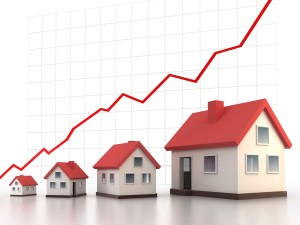Which makes a better property investment strategy – capital growth or rental yield?
Whilst it is possible to have both strong capital growth and a high rental yield, it is rare.
More often than not it is a choice between one and the other.
The answer to this question is not as straight forward or obvious as one would hope because different personal and financial circumstances and investment strategies give rise to different responses.
On the one hand going for strong capital growth seems an obvious choice because of the potential to generate long-term capital profit.
However, rental yields on high growth properties tend to be low meaning these properties are almost always negatively geared (that is, expenses like mortgage interest and other costs exceed the rent earned).
Whilst this provides the investor with some useful tax breaks (under current tax legislation) it still means they will be out of pocket each month until the property is sold.
Properties with a higher rental yield on the other hand, usually provide for a positively geared investment property (that is, where the rent exceeds all costs) meaning the investment pays for itself.
It also means the property is generating cash reserves which can be used to pay down the loan or for any other purpose.
The downside is that when it comes time to sell, the capital gain is likely to be substantially less than that of the strong capital growth property, especially when taking into account the compounding impact of year-on-year growth.
Importantly, whilst it is possible to have both strong capital growth and a high rental yield, it is rare.
More often than not it is a choice between one and the other.
And this in turn comes down to what best fits the investor’s objectives, risk profile and is the most affordable.
Strong capital growth strategy
Whenever you invest in residential property you want to generate a decent capital growth.
The question becomes the quantum of this growth.
I would define strong capital growth as inflation plus 4 per cent to 5 per cent annually over the long term.
So you are probably looking at growth rates at between 6.5 per cent and 7.5 per cent.
The risk with this strategy is, as alluded to above, that you’ll likely be out of pocket while you hold the investment and will be subject to interest rate risk, whereby increases in mortgage rates can be painful, especially if there are contractual and market constraints which limit the ability to raise rents.
There are ways to mitigate these risks, like borrowing less and taking out a fixed rate loan, but generally speaking this is an ongoing problem for this type of strategy.
In addition, a strong capital growth strategy places all your eggs in the one basket whereby all the profit is made sometime in future when the property is sold.
In the meantime, investors typically run at a loss and with negative cash flow.
High rental yield strategy
A high rental yield strategy is all about generating positive cash flows now thereby helping protect the investor from interest rate shocks and significantly reducing the potential need for ongoing cash injections.
This is a less risky investment strategy and as result, the overall return (due to the lower capital growth) is normally not as great.
Plus there may also be the need to pay tax if the assessed revenue is greater than the allowable expenses (including depreciation) thereby reducing cash flows to the investor.
Rental yields can vary but yields considered high are usually in the vicinity of 8 per cent to 10 per cent whereas for high capital growth properties rental yield is typically anywhere between 4 per cent and 6 per cent (even lower in some cases).
By the numbers
To illustrate the point let’s assume we have a choice of two properties both costing $400,000.
Property A has an expected capital growth rate of 7 per cent per annum and a rental yield of 4 per cent while Property B has a capital growth rate of 4% and a rental yield of 7 per cent.
Acquisition, finance and holding costs are the same.
The table below illustrates what the financial situation might look like after fifteen years:
As can be seen Property A’s value after 15 years would be substantially greater than Property B’s (almost 50 per cent more), whilst Property B would generate significantly more cash during the course of the investment.
You can also see that the rent differential narrows after fifteen years on the basis of the superior capital growth on Property A.
However this assumes rent levels can be moved in line with capital growth movements in order to maintain yields, which may or may not be the case.
Yield versus growth
So which is the best option?
Both strategies provide for good overall returns and a profit but represent quite different strategies with different financial rewards and risks.
The answer boils down to individual needs and objectives and is best determined by a detailed financial analysis including running some what-if and cash flow scenarios.
As an aside, if you are running a portfolio of properties it might make sense to include some high yielding ones and use the surplus cash to cover net outgoings for low yielding properties.
This would help you balance your portfolio.




No comments:
Post a Comment